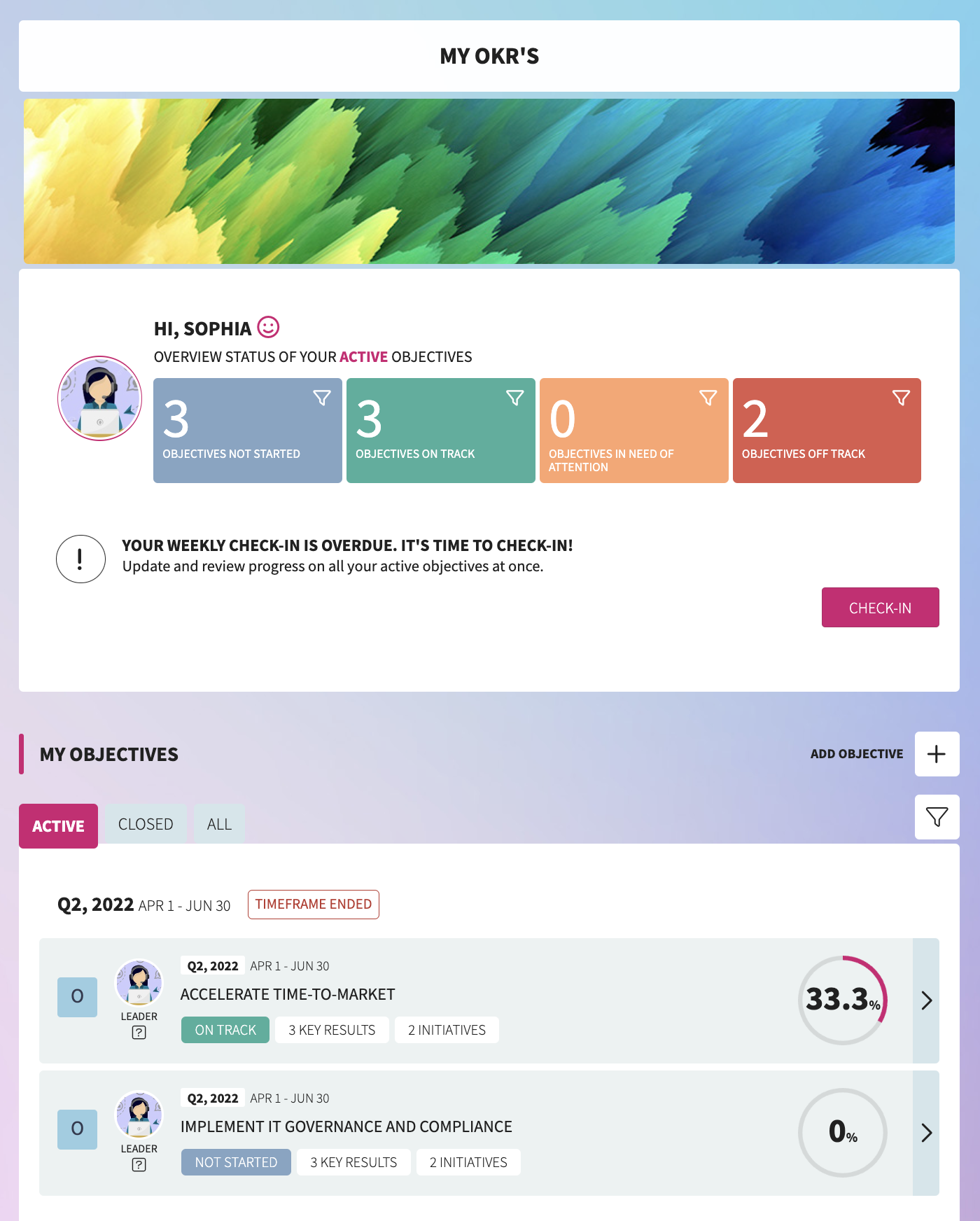The Essential Overview of OKRs
OKRs, for those who are unfamiliar, are a collaborative goal-setting tool employed by teams and individuals to set ambitious objectives alongside measurable results. Introduced by Andy Grove during his time at Intel, OKRs have grown to become a cornerstone in the goal-setting arena, embraced by industry behemoths like Google and LinkedIn. But why? Because they are the undisputed champions of alignment, focus, and engagement.- Alignment: OKRs bring clarity to your team’s vision and objectives, ensuring everyone’s on the same page.
- Focus: They help teams zero in on the most important goals, reducing the dilution of effort.
- Engagement: With clear objectives and shared goals, employees feel more involved and committed to the company’s success.
To understand OKRs better, let’s dive into a practical example. If our objective is to “Improve software delivery efficiency,” we could have key results like:
1. Reduce the lead time for changes by 20%.
2. Increase deployment frequency by 50%.
3. Lower the change failure rate by 15%.
OKRs give us a simple yet powerful framework to define and track objectives and their outcomes.
 OKRs in the World of Software Development
OKRs in the World of Software Development
In the software development arena, the use of OKRs is not just a recommendation, but a necessity.
Let’s look at why they’re so important:
- Facilitate improved focus and coordination within development teams.
- Promote continuous learning and improvement by setting measurable goals.
- Enable better decision-making by providing a clear vision and direction.
- Foster a results-driven culture, allowing teams to track their progress and stay motivated.
Now, the real question is, how can we tailor this tool to suit the unique requirements of a software development team? Let’s dig into the specifics.
The Right Mix: Agile and OKRs
The Agile approach is a favorite among software development teams, thanks to its flexibility and efficiency. Integrating OKRs with Agile practices brings a host of benefits:
1. Prioritization of Work: It ensures that teams work on features that bring maximum value, aligning the OKRs with the product backlog.
2. Team Autonomy: The cross-functional nature of Agile teams promotes ownership, and with OKRs, they can self-organize around the most impactful tasks.
3. Measuring Success: Agile focuses on delivering working software, and OKRs provide a means to measure the success of these deliveries.
Maximizing Efficiency: DevOps and OKRs
The DevOps culture thrives on automation, collaboration, and quick delivery. Here’s how OKRs enhance DevOps processes:
1. Accelerate Delivery: With clear objectives, teams can focus on automating deployments and achieving Continuous Delivery.
2. Improved Collaboration: Shared objectives between Development and Operations teams promote seamless communication and collaboration.
3. Quality Assurance: Clear, measurable results help identify bottlenecks in the pipeline, ensuring a high standard of software quality.
Practical Examples: OKRs for Software Development and Delivery
Now that we’ve discussed the theory, let’s bring it to life with some practical examples.
Here are five real-world OKRs you could use for a Software Development and Delivery team:
| Objective | Key Results |
|---|---|
| Improve software delivery speed |
|
| Enhance code quality |
|
| Strengthen customer satisfaction |
|
| Increase team efficiency |
|
| Boost security measures |
|
Your own OKRs will depend on your specific circumstances, goals, and challenges.
But with a tool like GFoundry, setting, tracking, and achieving these OKRs becomes an achievable mission, not a daunting task.
 The GFoundry Angle: OKRs Meets Talent Management
The GFoundry Angle: OKRs Meets Talent Management
OKRs alone are a powerful tool. But when paired with a robust talent management platform like GFoundry, you’re looking at a game-changing combination. GFoundry, a SaaS Talent Management Platform, brings gamification, feedback tools integration, and social features to the table, boosting employee engagement and improving performance.
1. Gamification of OKRs: GFoundry’s gamification aspect can be applied to OKRs, making goal tracking fun and engaging.
2. Feedback tools: GFoundry’s feedback advanced tools provide actionable insights to guide the management and tracking of OKRs.
3. Social Features: Social platforms within GFoundry promote transparency, collaboration, and celebration of achievements linked to OKRs.
Check out this OKRs guide for a detailed walk-through.
Don’t forget!
A strategic tool like OKRs can help software development teams stay focused, aligned, and engaged. When combined with Agile and DevOps methodologies, OKRs can drive efficiency, autonomy, and collaboration. The integration of a platform like GFoundry further enhances the OKR experience by gamifying goal-setting and tracking, making it an exciting, engaging, and rewarding process.
As I sign off, I hope you are inspired to embrace OKRs in your software development and delivery processes and witness the incredible benefits firsthand. Remember, it’s not just about setting objectives but also defining those key results that steer you towards success.
Till next time, stay focused, stay agile, and keep reaching for those key results!
Subscribe to GFoundry Newsletter: Weekly Insights on HR’s Most Pressing Topics
Keep on reading:
Ready to get started?
Take the next step and learn more about how GFoundry can help you.


 OKRs in the World of Software Development
OKRs in the World of Software Development The GFoundry Angle: OKRs Meets Talent Management
The GFoundry Angle: OKRs Meets Talent Management